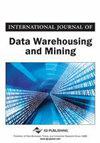基于差分进化算法的具有卡方限制的模糊投资组合模型
IF 0.5
4区 计算机科学
Q4 COMPUTER SCIENCE, SOFTWARE ENGINEERING
引用次数: 0
摘要
证券市场中的不确定信息具有模糊性。本文将预期收益和流动性视为梯形模糊数。预期收益的可能性均值和绝对偏差均值代表证券资产的收益和风险,而预期成交量的可能性均值代表证券资产的流动性。考虑到卡片数量和交易成本等实际约束,本文建立了一个具有卡片数量约束的模糊投资组合模型,并利用微分演化算法对其进行求解。最后,利用模糊 c-means 聚类算法,选取 12 只股票作为经验样本,提供数值计算实例。同时,利用模糊均值聚类算法对股票收益率数据进行聚类,全面准确地分析股票数据,为建立有效的投资组合提供参考。本文章由计算机程序翻译,如有差异,请以英文原文为准。
A Fuzzy Portfolio Model With Cardinality Constraints Based on Differential Evolution Algorithms
Uncertain information in the securities market exhibits fuzziness. In this article, expected returns and liquidity are considered as trapezoidal fuzzy numbers. The possibility mean and mean absolute deviation of expected returns represent the returns and risks of securities assets, while the possibility mean of expected turnover represents the liquidity of securities assets. Taking into account practical constraints such as cardinality and transaction costs, this article establishes a fuzzy portfolio model with cardinality constraints and solves it using the differential evolution algorithm. Finally, using fuzzy c-means clustering algorithm, 12 stocks are selected as empirical samples to provide numerical calculation examples. At the same time, fuzzy c-means clustering algorithm is used to cluster the stock yield data and analyse the stock data comprehensively and accurately, which provides a reference for establishing an effective portfolio.
求助全文
通过发布文献求助,成功后即可免费获取论文全文。
去求助
来源期刊

International Journal of Data Warehousing and Mining
COMPUTER SCIENCE, SOFTWARE ENGINEERING-
CiteScore
2.40
自引率
0.00%
发文量
20
审稿时长
>12 weeks
期刊介绍:
The International Journal of Data Warehousing and Mining (IJDWM) disseminates the latest international research findings in the areas of data management and analyzation. IJDWM provides a forum for state-of-the-art developments and research, as well as current innovative activities focusing on the integration between the fields of data warehousing and data mining. Emphasizing applicability to real world problems, this journal meets the needs of both academic researchers and practicing IT professionals.The journal is devoted to the publications of high quality papers on theoretical developments and practical applications in data warehousing and data mining. Original research papers, state-of-the-art reviews, and technical notes are invited for publications. The journal accepts paper submission of any work relevant to data warehousing and data mining. Special attention will be given to papers focusing on mining of data from data warehouses; integration of databases, data warehousing, and data mining; and holistic approaches to mining and archiving
 求助内容:
求助内容: 应助结果提醒方式:
应助结果提醒方式:


